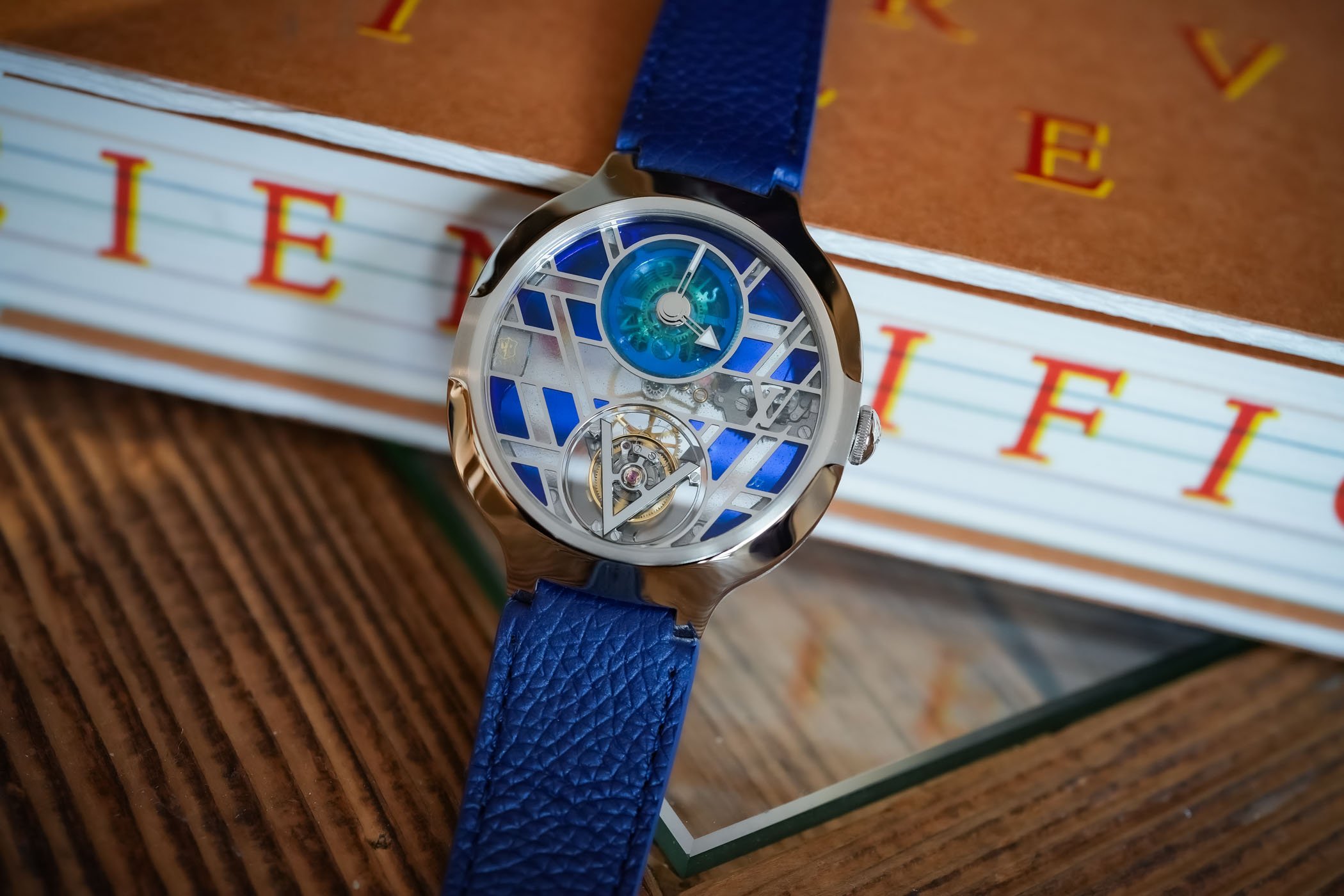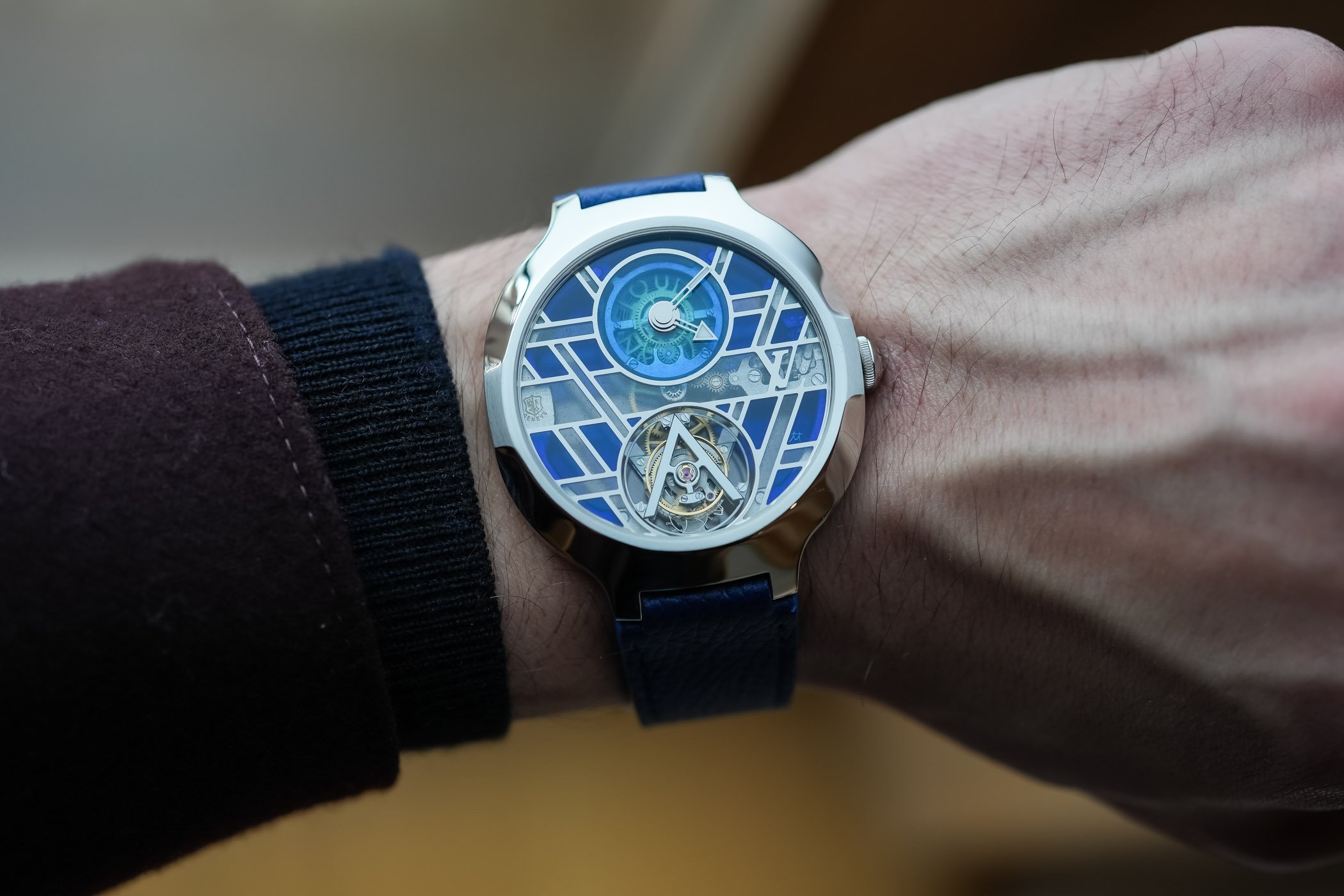Over the last decade, Louis Vuitton’s watch division has steadily expanded its presence in haute horlogerie, a journey that began with the acquisition of movement specialist La Fabrique de Temps (LFT) about ten years ago. La Fabrique des Arts, another distinguished LV atelier within the LFT dedicated to curating Metiers d’Art, provided expertise and know-how for Vuitton’s latest watch offering. The extraordinary lies in this collaboration Plique-à-jour The enamel dial for the latest edition of the Louis Vuitton Voyager Flying Tourbillon has been carefully crafted.
When it comes to Louis Vuitton watches, the Tambour collection immediately comes to mind. This signature design has been drastically streamlined, with most previous references removed, and is now primarily exemplified by the new Tambour version of the brand’s luxury sports watch with integrated bracelet concept. However, LV watches offer even more. In fact, much, much more. Especially when it comes to haute horlogerie.
As you navigate through the brand’s website, you’ll notice one conspicuous absence: the exquisite tourbillon watches housed in the mesmerizing Voyager case. Originally introduced as a support for a simple GMT model, the Voyager case has since evolved into a haven reserved exclusively for high-end complications produced in limited quantities. So the absence is justified. Think of the Poinçon de Genève Flying Tourbillon from 2016, followed by the Minute Repeater Flying Tourbillon from 2019. Recently released, the Voyager Skeleton Edition seamlessly integrates Louis Vuitton’s distinctive design language into an unexpectedly minimalist structure. The latest addition is the Voyager Flying Tourbillon “Poinçon de Genève”, which features the plique-à-jour enamel dial that deserves special praise and we are pleased to introduce the model.
The 41mm platinum Voyager case is the ideal canvas for this extraordinary creation. With an avant-garde silhouette characterized by graceful curves and a masterful mix of finishes, it harmonizes seamlessly with the dial, enhancing its beauty and adding elegance to the watch. This sophistication is underlined by impeccable craftsmanship, as the plique-à-jour enamel technique chosen is known for its difficulty, not to mention the high cost of production.
Plique-à-jour, loosely translated as “letting in daylight,” refers to transparent enamel without a backing. The design resembles a stained glass window with a metal frame (frame) filled with various transparent glass-like enamels of multiple colors. Plique-à-jour, like cloisonné, consists of metal partitions or cells with a temporary backing, usually removed by an acid bath. However, the artisans at La Fabrique des Arts opted for capillary filling without any support. This technique involves applying material into open cells using quick and light movements to ensure an even distribution of tooth enamel without air pockets.
The white gold frame of the new Louis Vuitton Voyager Flying Tourbillon Plique-à-jour dial consists of subtly intertwined V-shapes and round openings at 12 and 6 o’clock. It goes through five to six layers of enamel and the same number of firings in the kiln. The process requires around 100 hours of meticulous work to create just one dial and the result is truly amazing. Plique-à-jour imparts a natural translucency reminiscent of that found in nature and creates a fascinating play of colors in various shades of blue and gray when light penetrates the enamel.
The hand-wound LV 104 movement appears beneath the Métiers d’Art dial, which is protected by an anti-reflective sapphire crystal. Its openwork design reveals the flying tourbillon’s characteristic V-shaped cage, which completes a full rotation every minute and is clearly visible at 6 o’clock. The blue time dial with characteristic hands is positioned at 12; The Poinçon de Genève trademark is at 9 and the LV logo is opposite. This arrangement reflects the groundbreaking timepiece from 2016, which debuted the LV 104 caliber developed and assembled by La Fabrique du Temps.
The LV 104 movement consists of 168 components and was designed as a skeleton caliber rather than a modified existing movement. It operates at 21,600 vibrations per hour and has an impressive power reserve of 80 hours. The prestigious Poinçon de Genève seal certifies that the movement meets strict criteria for decorative finishing – all of which you can see through the transparent case back – and is a testament to exemplary timekeeping.
The new Louis Vuitton Voyager Flying Tourbillon “Poinçon de Genève” Plique-à-Jour is worn on a navy blue leather strap and fastens with a platinum folding clasp. The price is on request; Expect well over 200,000 euros. For more information, visit louisvuitton.com.
https://monochrome-watches.com/louis-vuitton-voyager-flying-tourbillon-poincon-de-geneve-plique-a-jour-enamel-q7ebby-platinum-hands-on-specs/








